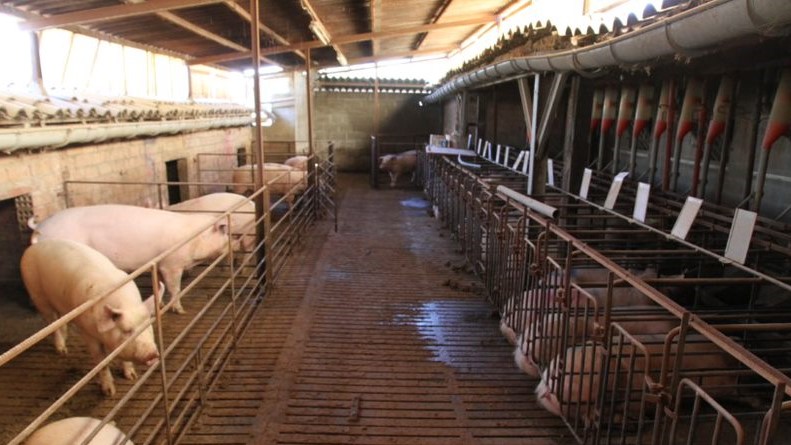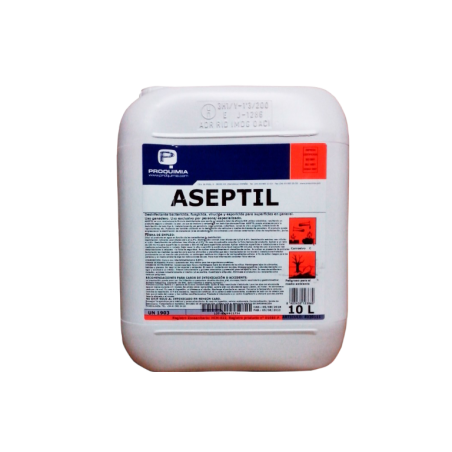We must keep in mind that it is difficult to specify general measures for PRRS control. Each operation has a series of intrinsic characteristics, meaning that the protocols to be implemented must be custom-designed. The measures to be implemented will differ depending on the type of production system (i.e.multi site production or farrow to finish), whether or not the farm has adequate quarantine and acclimation facilities, and whether it produces its own self-replacement or it takes its replacement animals from an off-site source.
The objective of the control program can be limited to preventing the appearance of clinical signs associated with the infection, but what we believe to be the most appropriate option is the following: The final objective of any control program should always be to stop virus circulation in the breeding animals in order to create a flow of negative growing animals. In other words, the goal is to achieve true stability on the farm or otherwise there will always be the risk of new outbreaks of the disease occurring.

With this objective in mind, the first step would be to determine the actual starting situation on the farm. To do this, it is necessary to establish a piglet monitoring program at farrowing to determine whether the piglets are positive or negative at birth. There are different ways to monitor piglets, and in each case the most appropriate way should be chosen, taking into account the sensitivity to detect infected animals, the cost, and the ease of sampling. If the farm is stable, the objective will be to maintain that status through acclimation programs for replacement females. If the farm is not stable, even in the absence of clinical signs we must establish specific control measures aimed at stopping virus circulation in breeding animals.
Especially when there is an outbreak situation, or if the proportion of piglets infected at birth is very high, to achieve the termination of viral circulation among breeding sows, a herd closure program should be carried out. To do this, we should program the entry of sufficient replacement gilts to minimize the decrease in the census and the aging of the farm, and then the farm should be closed to any animal entering during a period of at least eight months. This measure must be accompanied by a vaccination program of all the breeding animals, establishing good immunity and thus making it difficult for the field virus to circulate (Linhares et al., 2014).
However, a critical point in achieving stability and maintaining it over time is replacement female management. First, and indisputably, the source of the replacement gilts must be negative, regardless of the health status of the destination farm. In this way we will manage to prevent new PRRSV strains from entering periodically which, as we know, may possibly manage to escape the immunity that the current population has. Secondly, we must establish a quarantine and acclimation program for the future breeding sows. During the quarantine we will verify analytically, that the sows are negative upon entering quarantine and as they exit. During acclimation the goal we are pushing toward is to immunize the sows to limit the possibility of infection when they are in production.
How to vaccinate the replacements? Vaccine or field virus?
Immunization of replacement sows can be achieved through exposure to the virus strain circulating on the farm or through vaccination programs. To decide what strategy is best, a number of factors must be considered that include the health status of the destination farm, the age of the gilts upon entry to the farm, the length of the acclimation period, and the possibility of keeping the sows in isolation. As a basic rule, it should be taken into account that immunization through exposure to the field virus is only appropriate when the farm is in an outbreak situation or when it is possible to infect very young sows (not over two months old), when we can be sure that the entire herd will be infected quickly, and when the facilities allow a sufficiently long cool-down period in isolation. At this point we must remember the duration of infection in individuals and the possibility that non-viremic animals can efficiently transmit the virus.
It is important to remember that the virus has been detected by RT-PCR up to 251 days after experimental infection and infective virus up to 257 days post-infection.
This virus could maintain the ability to be transmitted to uninfected animals since different experimental studies have shown transmission in periods between 2 and 5 months post-infection, long after the cessation of viremia.
If all these conditions are not met, acclimation programs must be carried out exclusively by vaccination, ensuring the isolation of the females to prevent them from becoming infected with the virus on the farm until they have sufficient immunity. This is the most common mistake with acclimation programs: failing to prevent the infection of gilts when they are close to entering production. Monitoring animals during acclimation helps limit this risk, but it is not enough to prevent it completely. We must keep in mind that it is not enough to limit to a minimum the annual number of animals entering the farm, but that we ensure a sufficiently long acclimation period for each batch to achieve good protection. In general, the younger the sows are entering the farm, the better the control program can be designed.
Other management measures for PRRS control
These measures should be accompanied by other measures that work to hinder the virus from spreading to other groups, such as the McREBEL system in farrowing, implementing strict all in/ all out systems in the nursery and finishing phases, and implementing correct cleaning and disinfection procedures. It may even be appropriate, when possible, to establish a gilt segregation program, which will help stabilize the farm. Finally, remember that internal biosecurity measures should be accompanied by a good external biosecurity program that will help prevent lateral infections.
If we keep all these factors in mind, we have a chance at effectively achieving PPRSV control; but if we don't do so we will likely fail.









